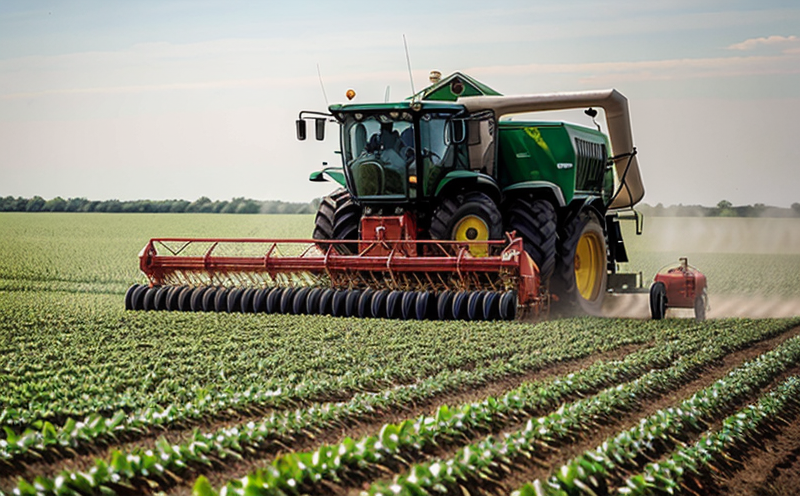Early Growth Vigor Testing
In agriculture and forestry testing, early growth vigor (EGV) is a critical indicator of plant health and potential yield. Early growth vigor testing involves the evaluation of seedling development and initial growth characteristics to predict overall crop performance. This test is particularly important for breeding programs, agronomy research, and ensuring robust field performance.
The primary purpose of EGV testing is to assess the quality of seeds or young plants by examining their physiological activity during germination and early stages of growth. By identifying seedlings with strong vigor, agricultural producers can optimize planting strategies, improve crop yield, and enhance overall productivity. This testing aligns closely with international standards such as ISO 3648:2017 for seed viability.
The process typically involves placing seeds in a controlled environment to simulate field conditions while monitoring key parameters like hydration levels, temperature, and light exposure. Instruments used include germination chambers equipped with precise humidity and temperature control systems. Specimen preparation requires careful selection of uniform seeds or young plants from the same batch.
During testing, seedlings are observed for traits such as speed of emergence, root development, shoot length, leaf expansion rate, and overall health. These metrics provide insights into genetic resilience and environmental adaptability. For instance, a faster root establishment can indicate better water and nutrient absorption capacity, which is crucial for sustaining growth in challenging soil conditions.
Testing results are reported quantitatively using standardized scales defined by agricultural research communities. Reports often include comparative data between different varieties or batches to highlight variations in vigor indices. This information helps breeders make informed decisions about selecting superior genotypes for future generations.
The significance of early growth vigor testing extends beyond just seed quality; it plays a pivotal role in sustainable agriculture practices by reducing waste and optimizing resource utilization. By identifying weak performers early on, farmers can implement targeted interventions at the beginning stages of cultivation, thereby increasing efficiency and profitability.
Furthermore, understanding EGV allows for better prediction of crop resilience against environmental stresses like drought or extreme temperatures. With climate change posing significant challenges to global food security, robust indicators of plant vigor become even more essential in developing resilient crops capable of thriving under variable climatic conditions.
Benefits
- Improved Crop Yield: By selecting seeds with high early growth vigor, farmers can achieve higher yields per hectare without increasing input costs.
- Better Resource Utilization: EGV testing ensures that resources are allocated efficiently towards plants expected to perform well in the field.
- Enhanced Product Quality: Plants with strong early vigor tend to produce higher quality products, whether it's fruits, vegetables, or grains.
- Sustainable Agriculture Practices: Identifying seeds that thrive under specific conditions supports sustainable farming methods and reduces environmental impact.
International Acceptance and Recognition
Crop yield and productivity testing, including early growth vigor (EGV) testing, has gained widespread international recognition due to its relevance across various agricultural sectors. International standards such as ISO 3648:2017 provide a framework for consistent measurement and evaluation of seed quality.
- ISO Standards: The International Organization for Standardization (ISO) has established guidelines that ensure uniformity in testing procedures worldwide. These standards help maintain high-quality benchmarks across countries, facilitating global trade and cooperation.
- ASTM Guidelines: The American Society for Testing and Materials offers additional recommendations tailored specifically to North American markets, ensuring compatibility with local agricultural practices.
Use Cases and Application Examples
- Breeding Programs: Seed companies use EGV testing to identify promising lines that possess superior growth characteristics, accelerating the breeding process.
- Agronomy Research: Scientists conduct long-term studies using this method to understand genetic influences on plant vigor and adaptability.
- Farm Management: Farmers employ EGV testing before planting to ensure they sow only high-quality seeds, minimizing risks associated with poor germination rates.





